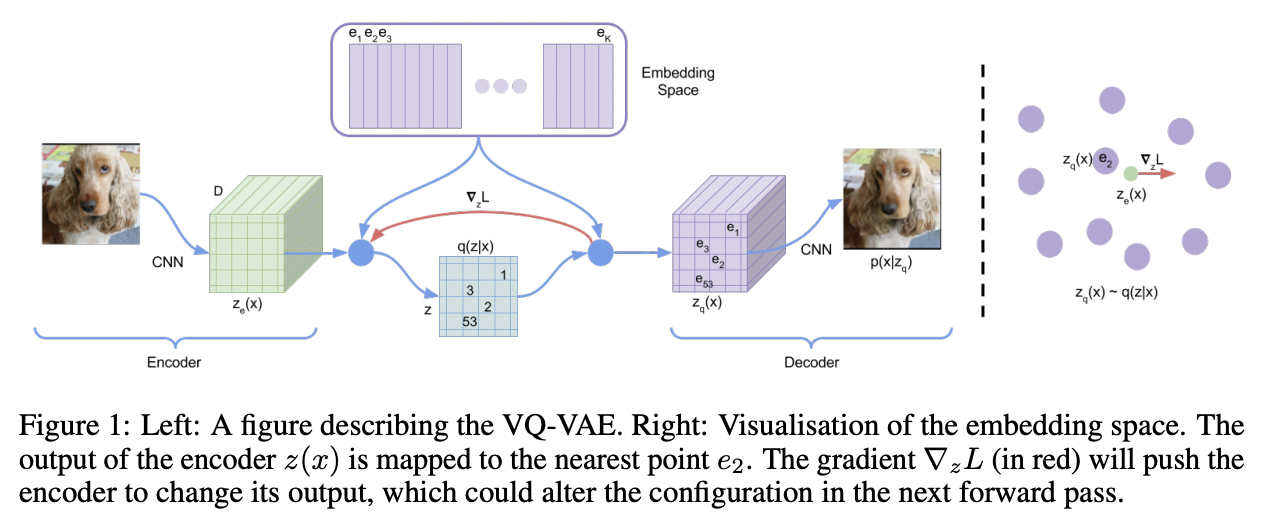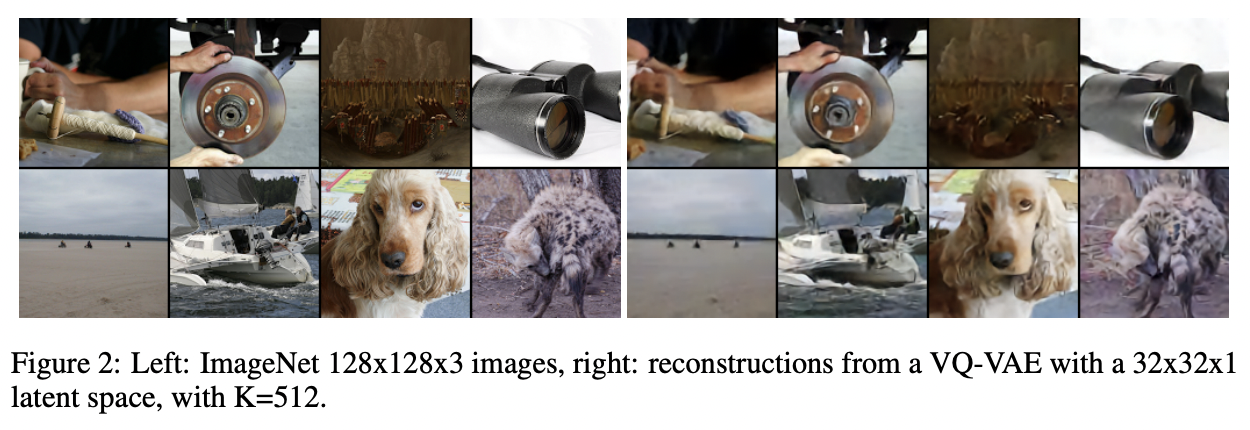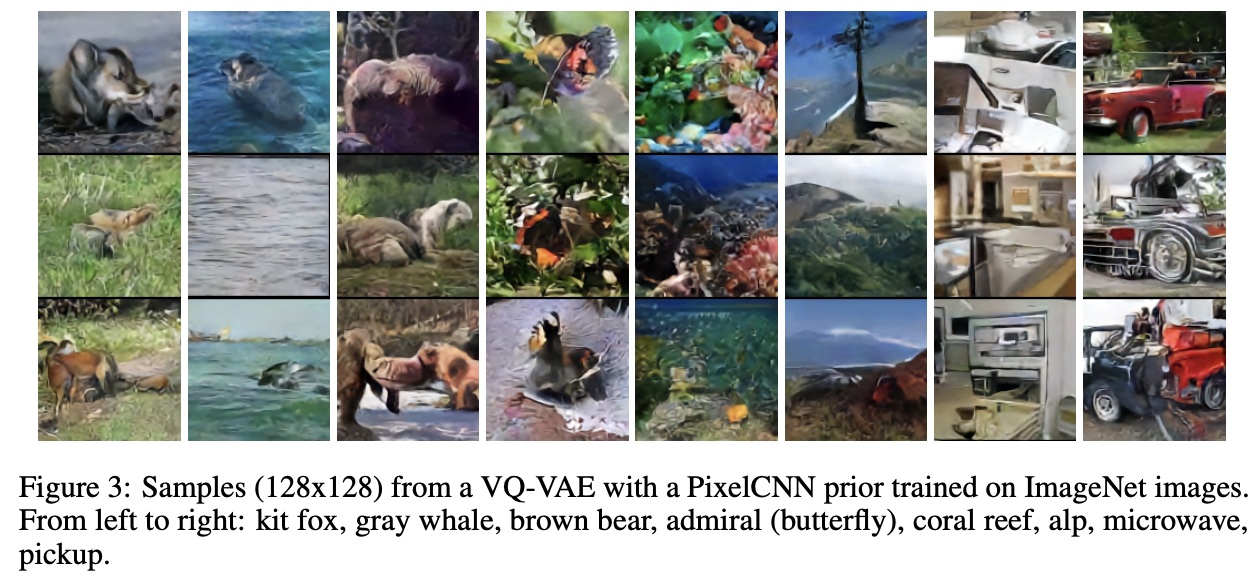VQ-VAE
Van Den Oord, Aaron, and Oriol Vinyals. "Neural discrete representation learning." Advances in neural information processing systems 30 (2017).
Contents
- Introduction
- VQ-VAE
- Discrete Latent Variable
- Learning
- Prior
- Experiments
1. Abstract
VQ-VAE
Vector Quantised VAE
-
Simple yet powerful generative model that learns discrete representations
-
Differs from VAEs in two key ways:
- (1) Encoder: Outputs discrete codes
- (2) Prior: Learnt rather than static
-
Key idea: vector quantisation (VQ)
\(\rightarrow\) Allows the model to circumvent issues of “posterior collapse”
( where the latents are ignored when they are paired with a powerful autoregressive decoder )
2. VQ-VAE

(1) Discrete Latent Variables
Latent embedding space \(e \in R^{K \times D}\)
- \(K\) : Size of the discrete latent space (i.e., a \(K\)-way categorical)
- \(D\) : Dimensionality of each latent embedding vector \(e_i\).
\(\rightarrow\) There are \(K\) embedding vectors \(e_i \in R^D, i \in 1,2, \ldots, K\).
Procedure
- Step 1) Takes an input \(x\)
- Step 2) Encoding
- Produce output \(z_e(x)\).
- Step 3) Find the nearest neighbor
- \(z\) are then calculated by a NN look-up using the shared embedding space \(e\)
- \(q(z=k \mid x)= \begin{cases}1 & \text { for } \mathrm{k}=\operatorname{argmin}_j \mid \mid z_e(x)-e_j \mid \mid _2 \\ 0 & \text { otherwise }\end{cases}\).
- Step 4) Decoding
- Input to the decoder: NN
- \(z_q(x)=e_k, \quad \text { where } \quad k=\operatorname{argmin}_j \mid \mid z_e(x)-e_j \mid \mid _2\)…. Eq (2)
- Input to the decoder: NN
(2) Learning
No real gradient defined for Eq (2)
\(\rightarrow\) Solve with detach (stop gradient)
Loss function:
- \(L=\log p\left(x \mid z_q(x)\right)+ \mid \mid \operatorname{sg}\left[z_e(x)\right]-e \mid \mid _2^2+\beta \mid \mid z_e(x)-\operatorname{sg}[e] \mid \mid _2^2\).
Log-likelihood of the model \(\log p(x)\):
- \(\log p(x)=\log \sum_k p\left(x \mid z_k\right) p\left(z_k\right)\).
(3) Prior
Prior distribution over the discrete latents \(p(z)\) : Categorical distribution
Whilst training the VQ-VAE
\(\rightarrow\)the prior is kept constant and uniform
After training,
\(\rightarrow\) Fit an autoregressive distribution over \(z, p(z)\), so that we can generate \(x\) via ancestral sampling
3. Experiments


